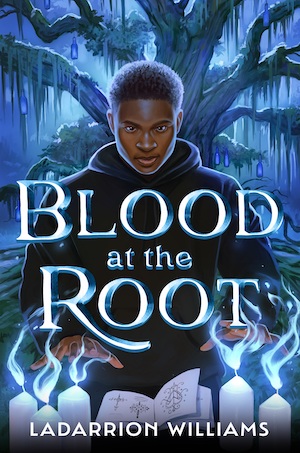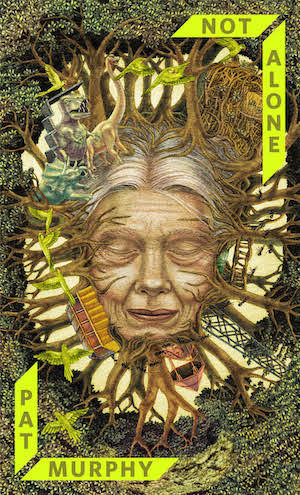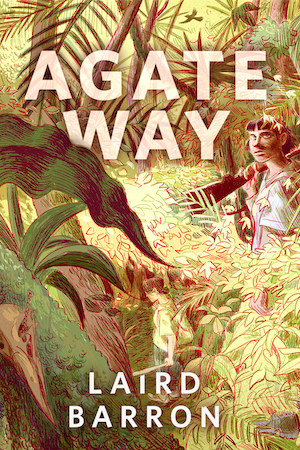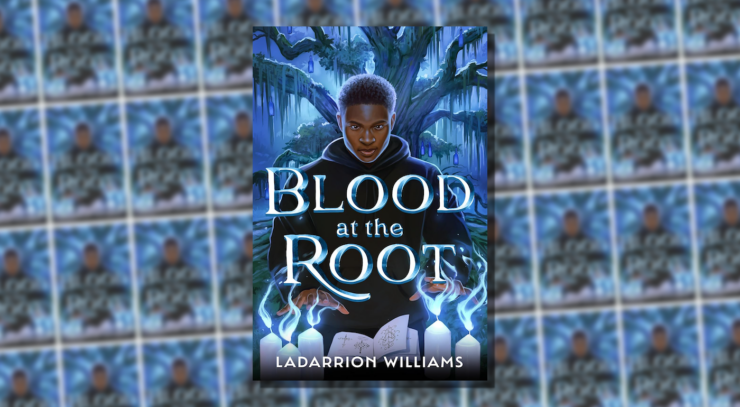When he was seven, Malik’s life fell apart. His mother disappeared in a violent attack that also birthed Malik’s magical powers—powers he has to keep hidden from everyone. The only person who knows his secret is Taye, Malik’s younger foster brother. The system has been rough on the boys, and they can only rely on each other. During an attempt to run away from an abusive foster family, Malik’s magic explodes once again, but this time he catches the attention of the family he never knew he had. His grandmother and her strange friends Baron Samedi and Auntie Brigitte introduce Malik to a new world full of magical Black folks. He enrolls in Caiman University, his mother’s alma mater, where he learns to control his magic and the history of Black magic.
While at Caiman, he makes new friends and reunites with old ones, like Alexis, who he fell in love with as a child then lost track of when she was adopted. He also learns that the wave of murdered and missing Black people are connected to some dark secrets haunting the university halls. The deadly violence, the wicked magic, and the family who loved him from a distance, they’re all connected, with Malik at the center.
Blood at the Root makes for a great double feature paired with Terry J. Benton-Walker’s Black YA fantasy series Blood Debts. Both center Black teens in the South, both utilize AAVE (African American Vernacular English) and Gen Z vernacular in compelling ways, and both allow Black boys to shine in all their chaotic glory. Also, crucially, both series explore intergenerational community activism and generational trauma. In my review of the second book in Benton-Walker’s series, Blood Justice, I talked about the importance of showing how different generations engage with community solidarity and social activism. Older generations often prioritize building for the future, which can mean tolerating things in the present we shouldn’t have to deal with. Younger generations often prioritize immediate change, which can mean alienating those with the power who can help us dismantle oppressive systems. There’s no real right or wrong here. We need both types of energy in order to sustain a movement and make systemic change. We need the people with the passion and risky impulsiveness to burn it all to the ground and the people with the wisdom and experience to build something new.
Buy the Book


Blood at the Root
In Blood at the Root, Williams digs into these themes even deeper. The way the older folks in the novel behave—from the secret-keeping to the tough love parenting to the “I did what I thought was best”—reminds me so much of my older relatives, many of whom grew up during Jim Crow and were raised around people who were the first or second generation born free. The kind of trauma slavery created, even several generations down the line, has a way of infecting everything. I recognized a lot of myself in Malik’s reactions toward the lies by omission he was told by the adults in his life. It’s not that they don’t love him, but that what they want and what he needs are two distinct things. When your entire survival depends on “I did what I thought was best,” it can be hard to see that you chose the wrong option, that you caused more or different harm than just being honest. You can’t see beyond your own need to survive.
A lot of Black kids go through that period where they try to learn about their family history and get hit with a wall of secrets, lies, and refusals. There’s so much about my own past I’ll never know because it was too hard for those who lived through it to engage with it and because they wanted to spare the next generation those hardships. So instead of confronting that trauma, it gets repackaged and passed down and down and down. All of Aya’s trauma got pushed onto Lorraine, who then inflicted it on Malik; he has no one to put it on, so he puts it back on himself. It’s a vicious, endless cycle. Others, like the woman Malik calls the Empress and Alexis’ adoptive parents, put that trauma in a box and poured themselves into respectability politics and Black excellence mantras. By the time it gets down to Alexis, she feels boxed in herself and frustrated by a lack of action.
Malik and Alexis think the older generations are doing nothing, but they’re really just so stuck in survival mode that they’re doing all they can. The kids leading the Civil Rights Movement struggled with this same push and pull, the BLM kids did too, and so are the young people in Blood at the Root. What I appreciate is that Williams doesn’t shy away from this. Nuance like this often gets left out of young adult fantasy, so it’s refreshing to have it examined with so much empathy.
Craft-wise, I loved the AAVE and Gen Z colloquialisms. It gave the story a vibrancy and realism that I think teens will enjoy. The book feels overstuffed at times, especially for a trilogy opener. When I learned that this story originally was supposed to be a TV show, the structure made more sense. We spend a lot of time just hanging out with Malik and his new friends and learning backstory, something that works well on TV but can bog down the narrative in a YA book. That said, the kids were cool and the college classes were interesting, so it wasn’t exactly a hardship reading those scenes. I hope we get to know the side characters more in future installments. While they all interact with Malik, those who aren’t the love interest or the teenage antagonist don’t get much character development. One veers a little too close to the sassy queer friend trope, and I hope they get some depth to their personality in the sequel.
The magical system felt a little too much like superpowers for my taste, but it’s also inventive and deeply rooted in Black diasporic cultural traditions. Even the way the characters cast magic feels beautifully Black, such as the spells cast in Haitian Kreyol or sung in old slave songs and gospel lyrics. Williams cleverly weaves magic into our history; the names of the buildings at Caiman U are veritable Easter eggs for important Black figures.
Blood at the Root may be LaDarrion Williams’ debut, but it’s clear he’s spent a lot of time thinking about this story. It’s evocative and exciting. There aren’t many young adult fantasy novels out there with a boy as the main character, much less a Black boy. I hope this series does so well that it opens the door for more books like this. And I especially can’t wait to see what adventures Malik has next.
Blood at the Root is published by Labyrinth Road.
Read an excerpt.










